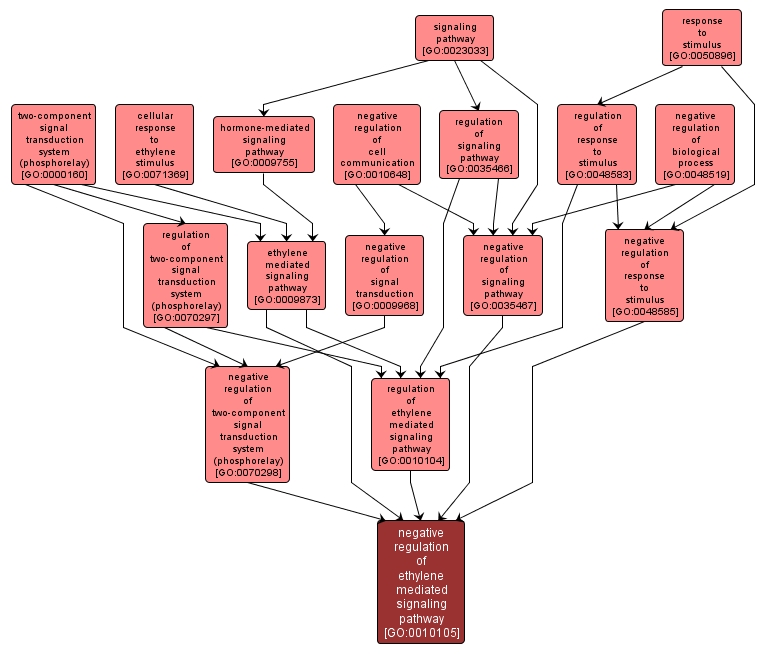GO TERM SUMMARY
|
| Name: |
negative regulation of ethylene mediated signaling pathway |
| Acc: |
GO:0010105 |
| Aspect: |
Biological Process |
| Desc: |
Any process that stops or prevents ethylene (ethene) mediated signaling. |
Synonyms:
- negative regulation of ethylene mediated signalling pathway
- down-regulation of ethylene mediated signaling pathway
- down regulation of ethylene mediated signaling pathway
- inhibition of ethylene mediated signaling pathway
- negative regulation of ethene mediated signaling pathway
- negative regulation of ethene mediated signalling pathway
- downregulation of ethylene mediated signaling pathway
|














